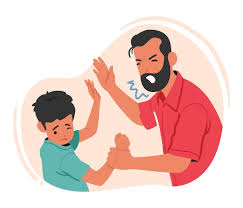Conflict is an inevitable part of life, and learning how to handle it in healthy and constructive ways is a crucial skill for children. Whether it’s a disagreement with a friend, sibling, or even a classmate, teaching kids how to manage conflicts from an early age helps them build emotional intelligence and interpersonal skills that are important as they grow. Here are key strategies for teaching children how to navigate conflicts:
1. Encourage Communication:
The foundation of resolving conflicts is effective communication. Teach kids to express their feelings using “I” statements, such as “I feel upset when you take my toy,” instead of blaming others. This approach prevents the other person from becoming defensive and promotes open dialogue. Encourage active listening, where children not only hear but understand the other person's perspective. Listening is equally important in conflict resolution, as it allows both parties to feel heard and respected.
2. Model Problem-Solving:
Children often learn best by observing adults. Show them how to approach conflict calmly by modeling positive behavior. When conflicts arise in your own life, involve your child in the conversation, explaining the steps you take to resolve the issue. Use role-playing scenarios to practice different conflict situations, so children have the tools to respond to real-life disagreements. Show them that most conflicts can be solved by thinking through options, considering solutions, and coming to a compromise.
3. Teach Empathy:
Empathy is the ability to understand and share the feelings of another. Helping children recognize and appreciate other people’s emotions can go a long way in conflict resolution. Encourage kids to ask questions like, “How do you think the other person feels?” or “Why might they act this way?” Empathy makes it easier for children to understand the perspectives of others and fosters cooperation instead of competition.
4. Set Boundaries and Consequences:
It’s essential to teach kids that while conflicts are normal, there are boundaries that should never be crossed, such as physical aggression or verbal insults. Clearly define what behaviors are unacceptable, and outline the consequences of such actions. Teaching respect for others’ feelings and the importance of managing anger can prevent escalation and ensure that disputes are handled calmly and respectfully.
5. Teach Negotiation and Compromise:
In many conflicts, no one person can get everything they want. Teaching kids how to negotiate and compromise helps them learn the importance of finding win-win solutions. Encourage them to think of creative solutions that meet both parties’ needs. For example, if two children want to play with the same toy, encourage them to take turns or find another activity to share. Understanding that compromising doesn’t mean giving up but rather finding balance is a valuable skill.
6. Encourage Emotional Regulation:
Conflicts often arise when emotions like anger or frustration are not managed well. Help children recognize their feelings and teach them how to calm down before responding. Techniques like deep breathing, counting to ten, or taking a break to cool off can be effective ways to manage intense emotions. When children learn to control their emotional reactions, they are more likely to engage in respectful, solution-oriented conflict resolution.
7. Reinforce Positive Outcomes:
When children successfully resolve conflicts, acknowledge and celebrate their efforts. Positive reinforcement boosts their confidence in using conflict-resolution skills and motivates them to apply these techniques in the future. Celebrate the fact that they worked through a difficult situation without resorting to aggression or anger, reinforcing the value of peaceful conflict resolution.
By teaching kids how to handle conflicts effectively, we equip them with essential life skills that not only benefit their relationships but also help them navigate challenges in a mature and thoughtful way. Conflict resolution fosters cooperation, builds self-confidence, and promotes healthier, more positive interactions among peers and adults alike.

